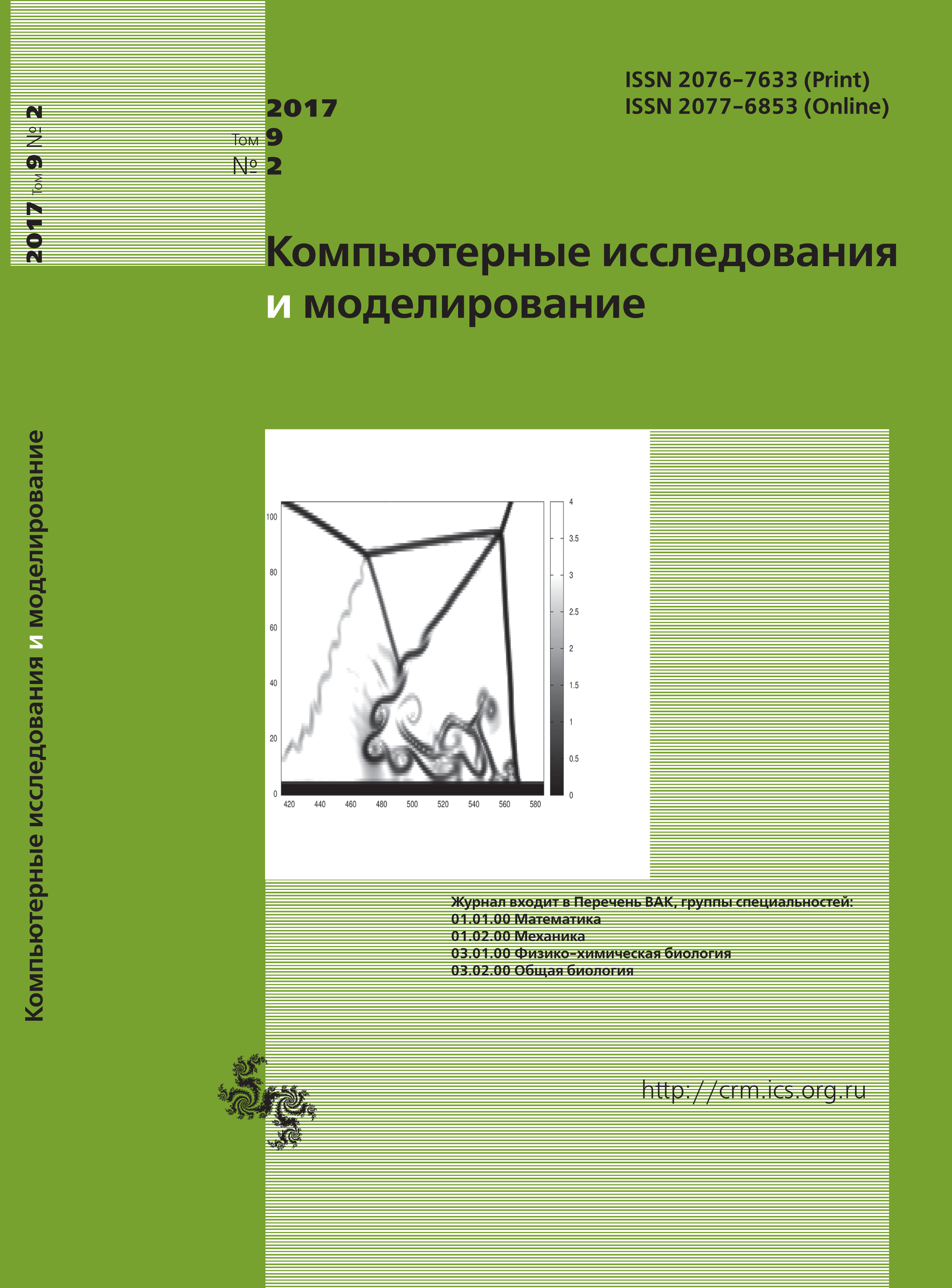All issues
- 2025 Vol. 17
- 2024 Vol. 16
- 2023 Vol. 15
- 2022 Vol. 14
- 2021 Vol. 13
- 2020 Vol. 12
- 2019 Vol. 11
- 2018 Vol. 10
- 2017 Vol. 9
- 2016 Vol. 8
- 2015 Vol. 7
- 2014 Vol. 6
- 2013 Vol. 5
- 2012 Vol. 4
- 2011 Vol. 3
- 2010 Vol. 2
- 2009 Vol. 1
Mathematical modelling of the non-Newtonian blood flow in the aortic arc
The purpose of research was to develop a mathematical model for pulsating blood flow in the part of aorta with their branches. Since the deformation of this most solid part of the aorta is small during the passage of the pulse wave, the blood vessels were considered as non-deformable curved cylinders. The article describes the internal structure of blood and some internal structural effects. This analysis shows that the blood, which is essentially a suspension, can only be regarded as a non-Newtonian fluid. In addition, the blood can be considered as a liquid only in the blood vessels, diameter of which is much higher than the characteristic size of blood cells and their aggregate formations. As a non-Newtonian fluid the viscous liquid with the power law of the relationship of stress with shift velocity was chosen. This law can describe the behaviour not only of liquids but also dispersions. When setting the boundary conditions at the entrance into aorta, reflecting the pulsating nature of the flow of blood, it was decided not to restrict the assignment of the total blood flow, which makes no assumptions about the spatial velocity distribution in a cross section. In this regard, it was proposed to model the surface envelope of this spatial distribution by a part of a paraboloid of rotation with a fixed base radius and height, which varies in time from zero to maximum speed value. The special attention was paid to the interaction of blood with the walls of the vessels. Having regard to the nature of this interaction, the so-called semi-slip condition was formulated as the boundary condition. At the outer ends of the aorta and its branches the amounts of pressure were given. To perform calculations the tetrahedral computer network for geometric model of the aorta with branches has been built. The total number of meshes is 9810. The calculations were performed with use of the software package ABACUS, which has also powerful tools for creating geometry of the model and visualization of calculations. The result is a distribution of velocities and pressure at each time step. In areas of branching vessels was discovered temporary presence of eddies and reverse currents. They were born via 0.47 s from the beginning of the pulse cycle and disappeared after 0.14 s.
Copyright © 2017 Tregubov V.P.
Views (last year): 13.Indexed in Scopus
Full-text version of the journal is also available on the web site of the scientific electronic library eLIBRARY.RU
The journal is included in the Russian Science Citation Index
The journal is included in the RSCI
International Interdisciplinary Conference "Mathematics. Computing. Education"







